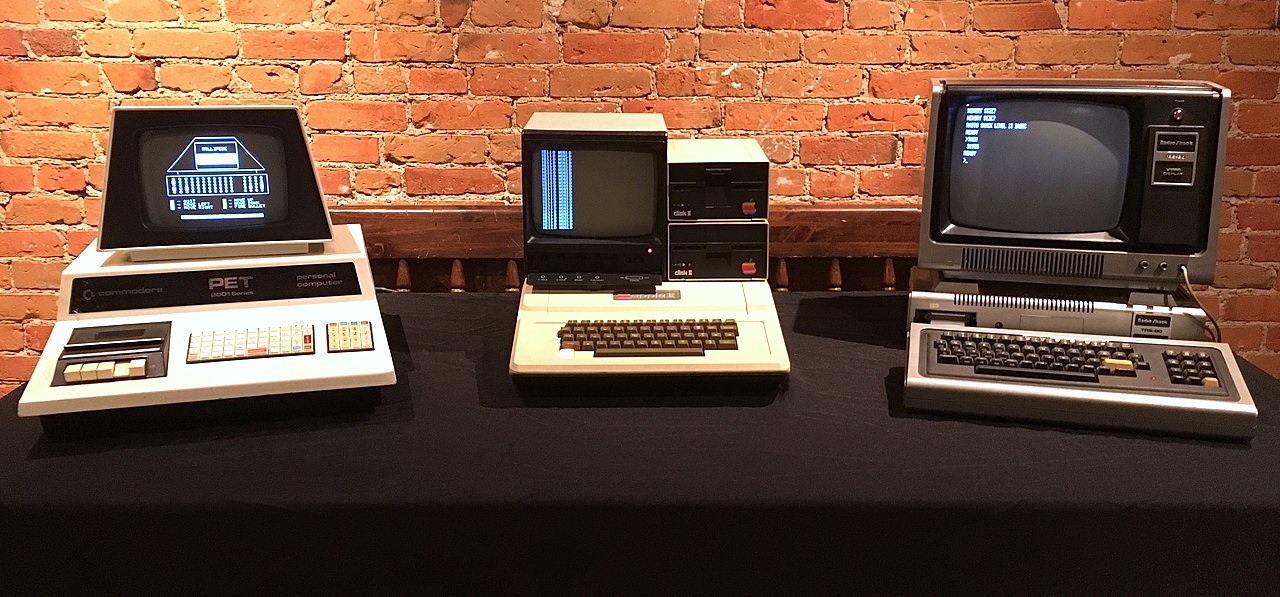Last time we talked about digital speech synthesizers and recalled how, in 1974, Donald Sherman, a person suffering from facial paralysis, first used a Text-to-Speech computer to order pizza over the phone. Then the synthesizer worked on the mainframe installed in the laboratory of Michigan State University. But with the development of technology and the advent of personal computers, TTS solutions have become more mobile.Let's talk about some of the early developments of that time. Photo Springsgrace / CC BY-SA
Photo Springsgrace / CC BY-SADECtalk Synthesizer
In 1981, Professor Dennis Klatt of MIT contacted Digital Equipment Corporation to discuss the prospects of his algorithm for concatenative speech synthesis . Such a system links together pre-recorded segments of natural speech. Representatives of the company saw the potential in the work of Clatt and decided to use them to launch their own voice synthesizer on the market. The development took three years, during which the project managed to change its name twice - from KLATTALK to CLATTER and, finally, to DECtalk .The release took place in 1984 - the case of the device was slightly larger than the cat. The device connected to any computer system with an asynchronous serial port ( COM port ), and its later versions - to the ISA bus . It also had connectors for connecting to a telephone line.This feature made it possible to automate work with incoming and outgoing calls. The machine was able to speak in nine voices: four male, four female and one childish. Each of the voices the user could tune independently - change the pitch and modify the transfer function of the head ( p . 61 ). Moreover, the system allows you to adjust the pronunciation of words. Thanks to this feature, she could be taught to sing ., DECtalk « ». DEC 2018 . «» Raspberry Pi, , , — .
In the 90s, DEC decided to sell the technology license to developers of third-party audio devices. For example, the DECtalk chip became part of the Sound Blaster AWE32 sound card ( we wrote about the replica of its ancestor on our blog). The bundle included specialized TextAssist software.DECtalk has become a fairly successful product. However, for a number of reasons, Digital Equipment Corporation transferred the rights to this trademark to Force Computers. She, in turn, resold her Fonix Speech, which today is known as SpeechFX . It still offers DECtalk-based speech synthesizers for embedded devices.SAM - Software Automatic Mouth
In 1982, developer Mark Barton (Mark Barton) released SA M . This is one of the first commercial software speech synthesizers for 8-bit computing systems: Atari 8-bit, Commodore 64 and Apple II.In the first case, SA M used the built-in audio chip POKEY . Its capabilities made it possible to create polyphonic music and effects in games. And its implementation is still used in a number of emulators, for example MAME . In the case of Commodore 64, a built-in SID circuit with a 4-bit DAC was used, which negatively affected the quality of speech reproduction. Photo Federica Galli / UnsplashAs for the version for Apple II, the synthesizer worked with a standard expansion board and an 8-bit digital-to-analog converter. SAM later appeared on the first Macintosh. Steve Jobs personally insisted that the program be included in the earlier version of Mac OS. The company entered into a partnership agreement with Barton, and its development, changing its name to MacInTalk, became part of the ecosystem of the "apple corporation."The novelty was immediately included in the presentation of the computer in 1984. The machine independently introduced itself on stage, starting with the phrase: “Hello. I'm Macintosh. "
Photo Federica Galli / UnsplashAs for the version for Apple II, the synthesizer worked with a standard expansion board and an 8-bit digital-to-analog converter. SAM later appeared on the first Macintosh. Steve Jobs personally insisted that the program be included in the earlier version of Mac OS. The company entered into a partnership agreement with Barton, and its development, changing its name to MacInTalk, became part of the ecosystem of the "apple corporation."The novelty was immediately included in the presentation of the computer in 1984. The machine independently introduced itself on stage, starting with the phrase: “Hello. I'm Macintosh. "Macintosh Complete Speech«, Macintosh. .
, , , IBM: „ , “.
, . , … ».
Today SAM is almost never used and serves as a historical legacy - you can find the web version of the synthesizer (and the code on GitHub ) on the network . Although in 2017, indie developers from Airdorf Games used a tool to voice characters in the computer-based horror game Faith .Of course, this is not all - just one of the first - speech synthesizers for PCs released at the turn of the century. But they paved the way for modern solutions that sound more realistic. We will continue to talk about the technologies used in them in the next article.
« Hi-Fi»: « »:
« »: :
: Sporth — live-
Sporth — live- :
: :
: